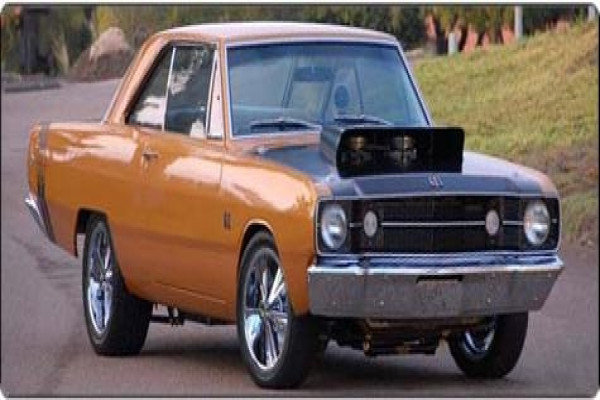
It was a dreary November day in Lincoln, Nebraska. The dull architecture of the industrial park did nothing to heighten my expectations. I was being dragged to see the car collection of "Speedy" Bill Smith, owner of the Speedway Motors mail-order speed shop. From my time following sprint car racing, I knew Smith as an eccentric, often irritating, racecar owner. I was expecting nothing more than a few dusty dirt-track cars back in the corner of the warehouse.
 1935 Miller Indy Car
1935 Miller Indy Car
Instead, it seemed like the Smithsonian Institution had built the American Racing, Engines and Cool Cars Museum. I knew I was in for something special when a beautiful, blue 1935 Miller-Ford Indy car sat just inside the foyer.
It was as if an aircraft fanatic believed he was going to an old hangar to see few a tired AT-6s and a disassembled MIG-21, but instead stepped into the Udvar-Hazy branch of the Smithsonian Air and Space Museum and saw the B-29 Enola Gay, the space shuttle Enterprise and a host of secret Nazi aircraft. The Smith is to fans of American racing as the Udvar-Hazy is to fans of flying things.
 Garage Diorama
Garage Diorama
The Petersen Museum in Los Angeles is acknowledged as the top car museum in the U.S. and many think the Indianapolis Motor Speedway Museum has the world's best collection of racecars. But, trust me, the Smith Collection Museum of American Speed rivals them both in the cars and engines, and the attractiveness of the displays. The Smith allows you to time-travel back to the good old days of racing.
Almost as important as the historic and often one-of-a-kind cars and engines, there are things like the original garage façade from Gasoline Alley at the Indianapolis Motor Speedway. Next to it is the drafting table where Leo Gossen penned engine and parts designs for Miller and Offenhauser engines for four decades.
 The Miller Room
The Miller Room
The Indy collection starts with a 1914 Cornelian that Louis Chevrolet drove in the 1915 Indy 500. It includes both famous and nondescript Indy cars. The Smith claims it has the world's largest collection of Miller racers from the 1930s. One is a rare rear-drive 1935 Miller that qualified on the outside of the front row. If there's a decade unrepresented by a Smith Museum Indy car, I couldn't figure out which one.
Engines are king at the Smith and the museum has a collection of Offenhauser engines that span from when Harry Miller started work on the design in the 1920s until the last Meyer-Drake tried to qualify for the 500. Other engines include the four-cam Ford with its bundle-of-snakes exhaust system that powered Jim Clark to victory in 1965.
 Mercedes Pushrod
Mercedes Pushrod
Other makes are well represented. The collection even has one of the infamous Ilmor-built Mercedes pushrod engines that slipped through a rules loophole to dominate the 1994 Indy 500. Certain key parts, such as the pushrods and rocker arms, are missing. (After the Penske-Mercedes team made Indy rules-makers look like fools and dominated the '94 race, the sport's best team failed to qualify in '95. Coincidence?)
Fans of sprint and midget car racing from the 1920s to the 1970s will revel in at the sight of cars driven by Jan Opperman, Doug Wolfgang and many others. Smith's No. 4X was a frequent sight in sprint car victory lanes.
 Pearson Daytona Winner
Pearson Daytona Winner
Old-school NASCAR fans will marvel at the primitive nature of the Wood Brothers No. 21. David Pearson took that car to victory lane many times, including when he idled across the finish line after a last-lap crash with Richard Petty to the win the '76 Daytona 500. A replica of one of Curtis "Pops" Turner's NASCAR convertible division stockers is on display as is a replica of a Tiny Lund-driven stocker.
There's a plethora of land-speed record cars and engines, too. Even the best mechanic will learn something from the powerplants of the past. The collection has more than 300 original or restored historic racing engines.
The Smith also boasts numerous original and restored road-going vehicles from before World War II. There's one of the 40 or so Tuckers that were built. Other highlights include a 1930 Model J Duesenberg and a 1937 Hudson Terraplane pickup truck. In addition, there's a host of street rods and hot rods. One, a 1920 Ford Model T, may be the oldest surviving hot rod.
 Pedal Cars
Pedal Cars
The museum is consumes three floors. We had only an hour to spend, so we clearly told the tour guide we weren't leaving the ground level. Smith's collection also shows his inner child with an array of toy cars, some 500 kid's pedal cars and soapbox derby cars.
Smith stays true to his well-noted eccentricity. Admission is by appointment only and everyone must stay with the tour guide to prevent unauthorized touching. It may be the 501(c)(3) non-profit concern, but this is Bill Smith's stuff: Look but don't touch. The one thing visitors are allowed to touch is the car Arie Luyendyk drove in the 2002 Indy 500. Everyone of svelte size can snuggle down into the cockpit and pretend.
The next time you're driving across Interstate 80 on a weekday between May and September, be sure to stop off at the Smith Museum. But call ahead (402/323-3166) or visit museumofamericanspeed.com to schedule an appointment. They say tours last two hours: I could have spent that long with just the Indy and sprint cars.









